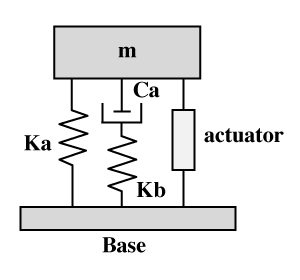Once, I was going through the MIT course lectures for my son for Computer Software and occasionally got to Mechanical Engineering. One of these lectures was about vibration isolation. A few years later, I am doing my Ph.D. in “Active vibration control during the spacecraft’s launch phase.”
As Prof. Kim Vandiver finds the appropriate frequency and tunes the strobe to “hide” vibrations on that video, the active vibration control software helps to isolate them physically. So, active vibration control has become critical in developing and applying various mechanical systems and sensitive equipment. As a result, active control systems are employed, and their efficiency largely depends on the software used in their design and implementation.
The importance of software solutions and modern software applications that are helping to create more effective vibration isolation systems is undeniable.
Principles of Active Vibration Control
Active vibration control reduces or cancels unwanted vibrations using dynamic or generated forces. The concept is based on destructive interference, where a secondary vibration with the same magnitude as the primary vibration but opposite in phase is introduced to annihilate each other.
An active vibration control system typically consists of three primary components:
- Sensors: These devices measure the vibrations and provide feedback to the control system, often as an electrical signal proportional to the vibration amplitude.
- Controllers: The control algorithms process the feedback from the sensors to determine the appropriate control action necessary to mitigate the vibration.
- Actuators: Based on commands from the controllers, actuators apply the required force to counteract the primary vibration effectively.
The right software for active vibration control is crucial as it affects the system’s overall performance, including sensors and actuators’ optimal utilization, without compromising any other mechanical or structural parameters.
Modern software platforms are essential in designing and implementing active vibration control systems. The main functions of these software platforms are:
- Simulation and modeling: Simulation tools enable engineers to create accurate mechanical system models and analyze the effectiveness of potential active control solutions. This helps make informed decisions regarding sensors, actuators, and control algorithms.
- Controller design: Developing efficient control algorithms is critical for the performance of the active control system. Software platforms provide several tools and libraries that can be utilized for designing both open-loop and closed-loop control algorithms. Engineers can build, test, and optimize control algorithms using these libraries before implementation.
- Real-time control: Some sophisticated software platforms provide real-time control capabilities, processing sensor data and sending commands to actuators within strict time constraints. This ensures a high level of performance and dynamic response to changes in the vibration environment.
- System monitoring and diagnostics: Many software solutions offer tools for continuous monitoring and diagnostics of active vibration control systems. These features can quickly flag potential issues, such as a sensor or actuator malfunction, allowing for timely maintenance and improved system reliability.
Modern Software Applications for Active Vibration Control
Several software applications are available in the market to cater to the various requirements for active vibration control. A few of the popular software solutions for simulations and data analysis include:
- MATLAB and Simulink: MATLAB is an extensively used programming language for technical computing and algorithm development. Simulink’s graphical modeling counterpart provides an interactive environment for designing and simulating complex systems. Together, MATLAB and Simulink are used for control algorithm design and optimization, as well as system modeling and simulation.
- LabVIEW: Developed by National Instruments, LabVIEW is designed for engineers and scientists to develop sophisticated measurement, test, and control systems using intuitive graphical programming. It offers a wide range of libraries and toolkits for signal processing and real-time control of hardware, including data acquisition cards and embedded controllers.
- ANSYS: ANSYS offers a suite of engineering simulation software, including structural analysis and optimization tools used to design and analyze components for vibration control. These tools help predict systems’ response under various loading conditions and provide valuable insights into improving the design for better vibration isolation.
- COMSOL Multiphysics: This versatile software platform offers an integrated physics-based modeling and simulation environment. Its Acoustics and Structural Mechanics modules provide comprehensive tools for analyzing and designing systems susceptible to vibrations, ensuring optimal performance of active vibration control systems.
- enDAQ Software Apps: enDAQ offers 6 software solutions to help analyze and act on data. 3 Customizable Software packages are capable of generating customizable reports and dashboards, while other 3 Standard Software Solutions enable setting up and analyzing data from enDAQ sensors.
Software for active vibration control would not be full without tries from different organizations and people from different areas of appliance, the list will be extended during my work on the topic:
- Drone’s autopilot solutions and problems of vibration isolation: PX4 and AnrduPilot
- Vibration isolation system for gravitational wave detector: gw-vis
- Python apps for Mechanical Vibrations course support: https://github.com/DocVaughan/MCHE485—Mechanical-Vibrations S&T
- Vibration Isolation in the car: Python library to emulate the process
Active vibration control has become increasingly important as industries start depending on more sensitive equipment, especially when we talk about delivering “gentle” spacecraft into orbit. Engineers rely on cutting-edge software solutions to develop efficient and effective active vibration isolation systems. These applications facilitate accurate simulations, system monitoring, real-time control, and continuous optimization, ensuring the highest performance and reliability in mitigating unwanted vibrations.

No Comments, Be The First!